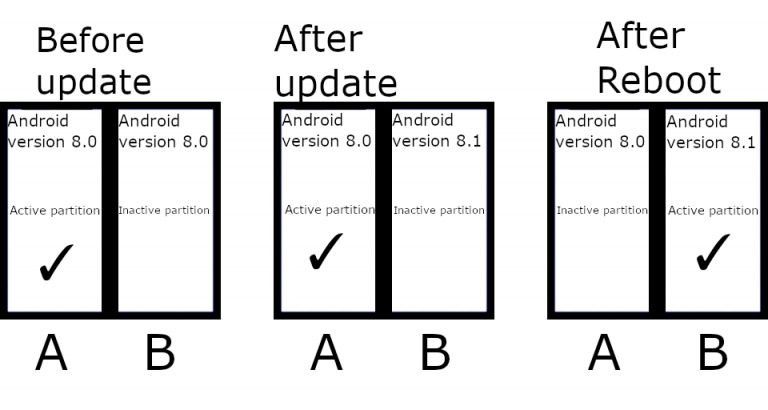
Google has made a lot of quality-of-life changes to Android over the years, but not all of them have been mandatory. Now, though, Google is making Android’s useful “A/B partitions” mandatory for future smartphones, essentially making Seamless Updates a standard feature at the same time.
A commit to AOSP Gerrit titled “Require Virtual A/B on R launches” updates the Vendor Test Suite — an automated test that devices must pass for Project Treble — makes Google’s intentions clear.
The test checks to see if a device has the system property “ro.virtual_ab.enabled” is set to true and “ro.virtual_ab.retrofit” is set to false on any device using API level 30 or higher.
In English, that means the test checks to see if a device supports A/B partitions and is launching on Android R (11) or higher. If it does, it passes. If it does not, it fails. Google hasn’t yet merged the change, so there’s still a slight chance this requirement might not go through, but if it does it would make these partitions mandatory on any Android 11 device.
To quickly bring everyone up to speed, what are A/B partitions? The folks over at have a great in-depth explainer on how the feature works, but essentially it puts essential files into “slots” on your device. When an update is installed, the device updates the files in slot B while leaving the phone on slot A. That inactive slot B can be updated to the next version of Android until the user reboots and the device switches over from slot A to slot B, leaving them on the newer version of Android.
This is pictured below.

What’s the benefit of this? For one, it keeps the update process almost entirely in the background. You can keep using your phone while the update is being installed and actually applying it takes just moments as it would with a normal reboot. If your phone is updated often, this feature — called Seamless Updates — is a big time saver!
On top of that, A/B partitions in Android can save you if, by chance, an update is corrupted and fails to install. In that case, only the inactive partition (“slot B”) would be affected, so you can keep using your phone as normal.
Seamless Updates in Android are a pretty big win for users, only at the sacrifice of a bit of storage capacity. Still, that bit of storage has left some companies as holdouts for adopting the feature. Samsung is the biggest offender, because apparently, it would take up to 3GB of extra storage off the device.
With A/B partitions becoming mandatory in Android 11 devices, Seamless Updates are likely also going to become a whole lot more common. In turn, that will likely also help Android users to update their devices more often since there’s less of a time commitment.
More on Android:
- Google allegedly forces Android OEMs to mention ‘easy access to Google apps’ on new phones
- Here’s everything new in Android 11 Developer Preview 2 [Gallery]
- Google Chrome for Android may soon support multiple displays with separate tabs
Author: Ben Schoon.
Source: 9TO5Google





